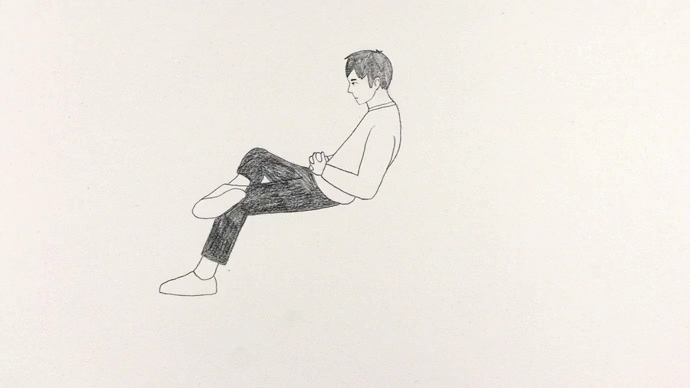- The school
- Studies and Research
- BACHELOR
- MASTER
- DOCTORATE
- RESEARCH
- TRANSDISCIPLINARITY
- POOLS
- CONTINUING EDUCATION
- Continuing education 2025-2026
- Artificial Intelligence, initiation
- Artificial Intelligence, Advanced
- Artificial intelligence open-source, ComfyUI
- Creative coding
- Engage with drawing
- Frame-by-frame animation
- 3D exhibition modeling in SketchUp
- 3D modeling, Blender
- Point cloud scanning
- Documentary podcast
- Serious games
- For students
- Studying at the HEAD
- InfoLab
- Living in Geneva
- Tuition fees and sholarship
- Library
- Regulations and instructions
- Projects
- Events
- Press
- Partnerships and prizes

Formes typographiques manuelles
© HEAD – Genève, Michel Giesbrecht
© HEAD – Genève, Michel Giesbrecht
Formes typographiques manuelles
© HEAD – Genève, Michel Giesbrecht
© HEAD – Genève, Michel Giesbrecht

Formes typographiques manuelles
© HEAD – Genève, Michel Giesbrecht
© HEAD – Genève, Michel Giesbrecht

Formes typographiques manuelles
© HEAD – Genève, Michel Giesbrecht
© HEAD – Genève, Michel Giesbrecht

Suédition
© HEAD – Genève, Michel Giesbrecht
© HEAD – Genève, Michel Giesbrecht

Suédition
© HEAD – Genève, Michel Giesbrecht
© HEAD – Genève, Michel Giesbrecht

Suédition
© HEAD – Genève, Michel Giesbrecht
© HEAD – Genève, Michel Giesbrecht

Suédition
© Jérôme St-Loubert Bié
© Jérôme St-Loubert Bié

Suédition
© Jérôme St-Loubert Bié
© Jérôme St-Loubert Bié

Animatou
© HEAD – Genève
© HEAD – Genève

Animatou
© HEAD – Genève
© HEAD – Genève

La Dreamachine
© Caroline Sury
© Caroline Sury

La Dreamachine
© Caroline Sury
© Caroline Sury

La Dreamachine
© Caroline Sury
© Caroline Sury

Dessine-moi un mouton
© Yoann Minet
© Yoann Minet

Dessine-moi un mouton
© Yoann Minet
© Yoann Minet

Dessine-moi un mouton
© Yoann Minet
© Yoann Minet

Litho-graphisme
© HEAD – Genève, Michel Giesbrecht
© HEAD – Genève, Michel Giesbrecht

Litho-graphisme
© HEAD – Genève, Michel Giesbrecht
© HEAD – Genève, Michel Giesbrecht
Litho-graphisme
© HEAD – Genève, Baptiste Coulon
© HEAD – Genève, Baptiste Coulon
Litho-graphisme
© HEAD – Genève, Baptiste Coulon
© HEAD – Genève, Baptiste Coulon
Mapping the invisible Geneva
© HEAD – Genève, Baptiste Coulon
© HEAD – Genève, Baptiste Coulon
Mapping the invisible Geneva
© HEAD – Genève, Baptiste Coulon
© HEAD – Genève, Baptiste Coulon
Mapping the invisible Geneva
© HEAD – Genève, Baptiste Coulon
© HEAD – Genève, Baptiste Coulon

Mapping the invisible Geneva
© Herman Kossmann
© Herman Kossmann
Semaine de tous les possibles
February 2019 to March 2019
Semaine de workshops avec les étudiant.e.s de 1ère et 2ème année Bachelor Communication Visuelle.
Intervenant.e.s: Martine Anderfuhren, Demian Conrad, Alaric Garnier, Herman Kossman, Yoann Minet, Olivier Riechsteiner Jérôme St-Loubert Bié, Caroline Sury
Manual typographic forms
As part of this one-week workshop under the direction of the painter Alaric Garnier, students have drawn and painted letters on different scales. Each one had to conceive and realize the cover of a book that they had chosen to revisit, with the constraint of not using an existing typography. All the texts were drawn and painted by hand, to measure.
Suede / graphic hijacking and editorial appropriation
In this one-week workshop led by the graphic designer Jérôme St-Loubert Bié, the students were introduced to the notions of artistic appropriation, misappropriation, pastiche, repetition, reenactement and meme. In small groups, they experimented all sorts of tracks in a collective and participative spirit, favoring the spontaneity, the inventiveness and the do-it-yourself, before carrying out publications on the mode of the diversion of existing publications.
The Dreamachine / illustration, paper cut
Illustrator Caroline Sury invited the students of this one-week workshop to replay the experience of the "Dreamachine" invented by Brian Gysin, a light pulse machine composed of a cylinder of paper cut and a turntable. Using this device, the students cut out various patterns in a black sheet that then became the small theater of their kinetic scenarios, projected large on the surrounding walls.
Draw me a sheep / typographic creation
The font designer Yoann Minet suggested to the students of this week-long workshop to start from the mental alphabet that have forged their readings, to revisit their shapes and silhouettes in the creation of a new character. It was also an opportunity for students to discover methods that are useful for designing and developing a font through the use of vector drawing techniques specific to typography.
Litho-graphics / direct drawing on offset plates
Lithography is a discipline that uses industrial lithography (offset printing) to create analog graphic visuals that one could not create from a computer. These visuals have aesthetic qualities specific to the process of creation, sometimes liquid, sometimes blurred, which characterize the pioneering work of the photogram at the beginning of the 20th century. It is in this spirit that Demian Conrad invited students to test several techniques in this area, before printing a selection of their creations.
Mapping the invisible Geneva / scenography - space
In this two-week interweaving workshop under the direction of the scenographer Herman Kossmann and Martine Anderfuhren, the students discovered a Geneva they did not necessarily know, far from the clichés of international Geneva. They randomly selected a character (beggar, cleaner, child) and were invited to develop scenarios considering the city through the eyes of the latter. They then scenographed spaces and objects symbolizing the presence, the interactions and the use of the city of these characters.
